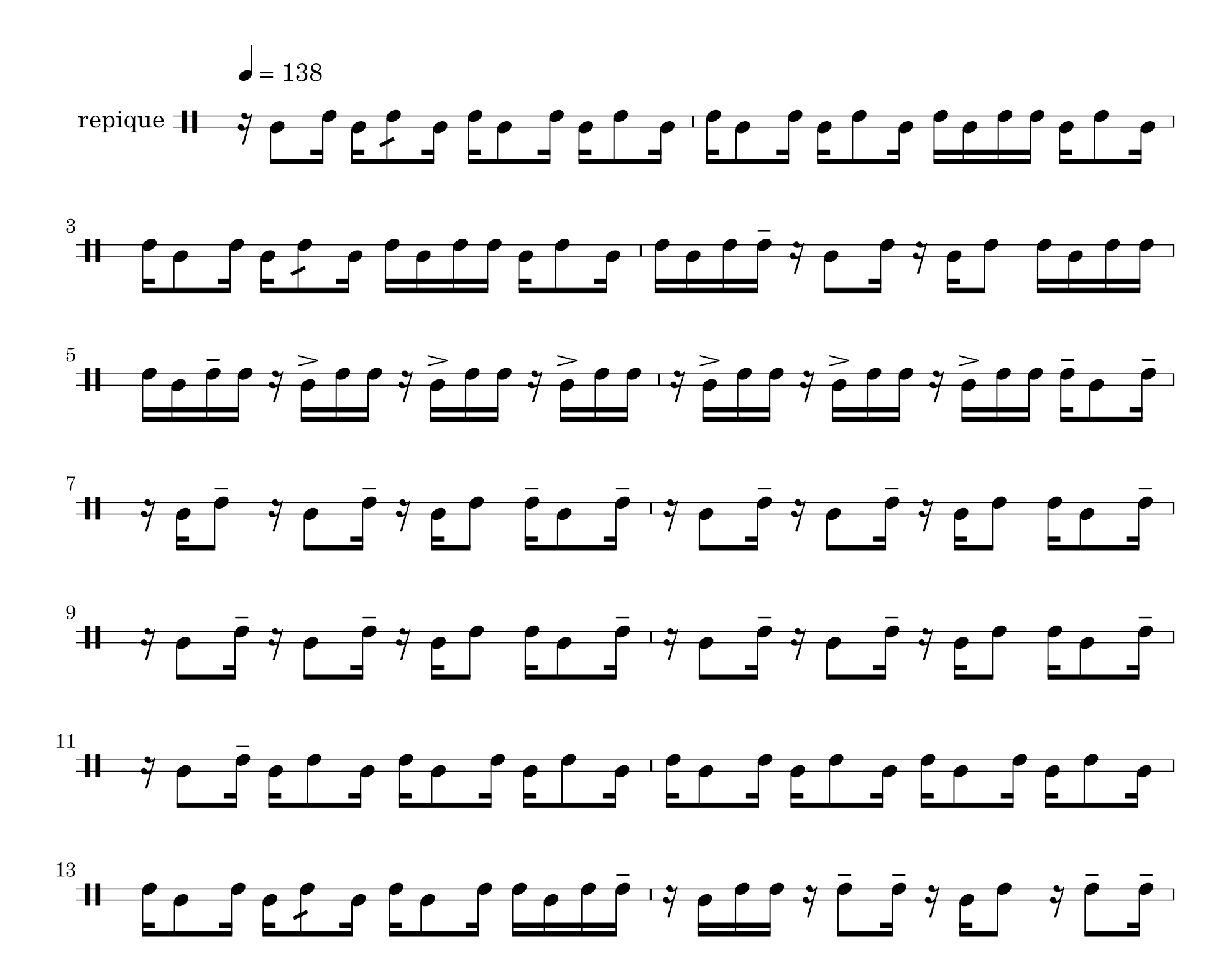Improvisation techniques of the repique drum in Uruguayan candombe drumming
Transcription and analysis of the most common patterns in the improvisation of a repique drum.
Luis Jure
June 26, 2018
Thessaloniki, Greece
Fifth International Conference on Analytical Approaches to World Music

Abstract
With its deep African roots, candombe drumming is one of the most defining features of Uruguayan culture and symbol of the identity of communities of African descent in Montevideo. Its cyclic, clave-based rhythm results from the interplay between the patterns of its three drums. The small, high-pitched chico drum establishes the pulse by repeating a simple one-beat pattern throughout the whole performance, while the bigger, deep-sounding piano drum delineates the timeline with a more varied and ornamented pattern. The repique, the drum with the greatest degree of freedom, introduces an element of syncopation and complexity through a great variety of rhythmic figurations. Although it has a primary pattern or “repique básico”, the repique is essentially an improviser and its repertoire of patterns is difficult to classify. This article presents musical transcriptions and analyses of several repique solos from both field and studio recordings of notable players belonging to the two most important traditional styles. The purpose is to assess the importance of the primary repique pattern and its derived forms in the improvisation, as well as identify patterns not directly related to the “repique básico”. Differences among players of different generations and neighbourhoods will also be taken into account.